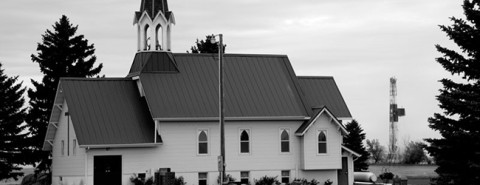Racked by fracking: Ministry challenges in the oil boom
Trinity Lutheran Church at Marley Crossing, outside Williston, North Dakota, sits on a vast plain at the foot of a butte near the confluence of the Missouri and Yellowstone Rivers. The tiny white clapboard building and parish hall were built in the 1950s near the railroad tracks by farmers and ranchers using donated labor and materials. When you see the church and its surroundings, the phrase “in the middle of nowhere” comes to mind.
But since North Dakota’s oil boom began in 2008, Marley Crossing is no longer a quiet, remote and beautiful kind of nowhere. The technology of hydraulic fracturing, or “fracking,” has enabled oil companies to drill for the millions of barrels of crude oil that lie in the shale in western North Dakota. More than 200 oil rigs operate in the state, producing about 20 million barrels of oil every month.
Hundreds of trucks carrying oil, sand and especially water—400 to 800 gallons of which is needed per day per well—now drive by the church every day, and some drivers use the church’s gravel parking lot as a place to sleep overnight. Every bit of land around the 50-member church, which was built on an easement, has been sold to various interests in the oil industry. Church members have heard rumors that plans are being made to build a refinery and a saltwater treatment facility nearby. (The brackish water used in hydraulic fracturing needs to be separated, after use, into recoverable oil, salt water for reinjection in a deep well and sludge for disposal.)






